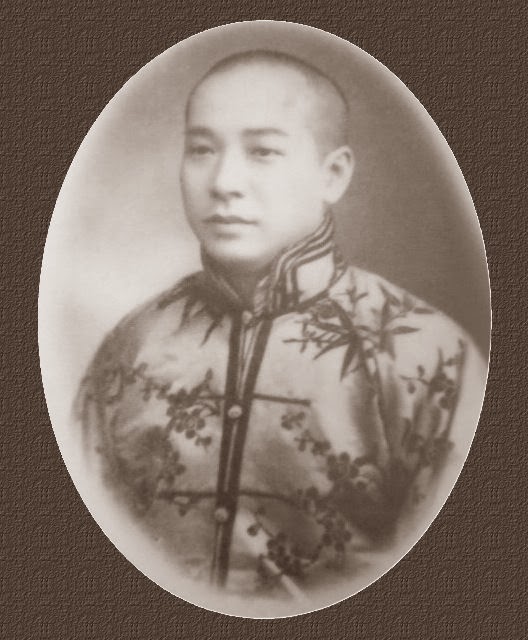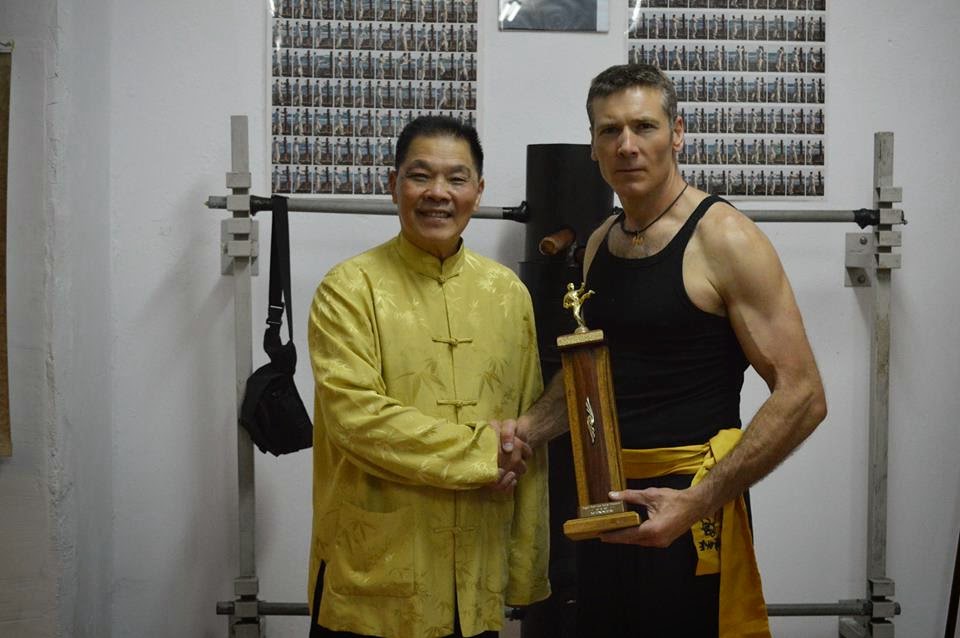1) Your hands are only as good as your stance
Let's start of with probably the most important thing before you get into chi sao. If you want to improve your chi sao significantly then make sure you've got a solid YGKYM. All to often, I see people jumping into chi sao, when they can't even find there own center of balance. Thus, imagine one of those huge red wood trees, in Return of the Jedi, how strong would that tree be, if its roots were decaying? Obviously, it wouldn't take that much force to knock it over. There are several ways to test your YGKYM stance. The first being just sitting in your stance for about 45 minutes, if you can last an entire 45 minutes without any aches or pains anywhere, then you'll know you've found you center. The 2nd way is have a partner push against your chest slightly and see whether or not you can actually root against the force. If you can't handle a light push, then you aren't going to be able to handle the oncoming force with your stance during chi sao.
2) Recipe for tan, bong, fok?
Tan, bong, fok sau oh my. These are the main ingredients when doing chi sao, thus its key to know how to do these moves correctly, and to understand how they are put together structurally. Now, I'm not going to dive into detail about each one, coz that would be an entire article on its own. But keep in mind some simple rules. Tan sau should be flat, do the test for yourself and see if you can feel the difference between a flat tan and one that isn't. Imagine a tan being a bridge between you and an opponent, can a bridge connect 2 points being up. Of course not! Bong sau, key thing is make sure your elbow is higher than your wrist and make sure that the hands/fingers continue in the direction of your forearm. Finally fok sau, probably the most difficult one of the 3, be aware of the point of contact.
Why is it important for you to know the structure of each of these moves? Imagine them to be your TV antenna, if the antenna is just slightly off, your reception won't be that good. If you tan isn't in the right position, then that will decrease your level of sensitivity.
3) I'm ready to fight?
Ah, jumping ahead of ourselves once again. Before you get into those prodigal son battles, make sure first and foremost, that your roll is decent. While chi sao may seem like 2 guys facing each other working a steering wheel, it is in fact a constant forward motion, instead of what appears to be a circular movement. What's the difference? If you have a circular movement and force is pushed slightly against it, if you remove the force, your hand will remain in the same position and continue its circular movement. On the other hand, imagine your hand as a spring, waiting for the pressure to be removed. Once the pressure is no longer there, the hand will automatically move forward. Thus, you won't even have to think when to attack. Key note though, is that the forward pressure doesn't need to be initiated by you, if your structure is correct for tan, bong, and fok, the structure along will maintain that forward pressure. All to often people, either have no forward motion or over emphasize it too much.
4) Equality for both sides
In the beginning when doing chi sao, picture it as if you were doing push ups against the wall. Notice in order to keep your body square you need to push equally on both sides of your arms. Well, when you start doing chi sao its sorta like the same thing. You want to be able to maintain equal energies on both sides when your rolling. Literally, regardless of what position you are in:
inside gate - bong sau and tan sau
outside gate - double fok sau
chi sao - tan sau and fok sau or bong sau and fok sau - thus being in both inside and outside when rolling
The wrist for the most part are lined up with each other for both arms. The importance of equal energy, well its because of the inequalities of the forward drill when doing chi sao, that your opponent can use that to his advantage.
5) Tension vs. Energy
Mommy, what's the difference between tension and energy? One of the most recurring problems when doing chi sao, is differentiating between tension and energy. When you use tension it involves muscle, which reduces your sensitivity significantly. Thus, have you ever rolled with someone who was really tense, then all of a sudden just pulled your arm away from his. You'll notice when its tension the hand just stays there doing nothing at all. But if it was energy, the hand automatically shoots out towards you. That's the difference between the 2, and how you can tell one from another.
6) Where's my center?
I'm sure everyone has done this before. Have someone do a bong sau and place it perfectly into the correct position, and then press against his bong sau. What you'll notice is how much force that the bong sau can take, with the guy/gal putting very little effort in dealing with the force. Now offset that bong by either moving it slightly left or right, let's just say about 1% of the center line. And see the huge difference. Notice how easily it is to collapse his bong sau with very little pressure at all. Well, in chi sao its key to be aware of the centerline for everything that you do. Thus, if your in inside gate, you need to make sure both your tan and bong are in the proper position, if your just slightly of, just like in the example above, your opponent can take advantage of this.
7) Fok sau woes
Probably the most difficult thing in the beginning to deal with is that of fok sau. The most difficult thing is maintaining forward pressure upon the roll, and the most common mistake is pressing downward with the fok sau. Notice the Siu Lim Tao is the blue print for the motions of all the moves, and if you do 3 fok sau's in SLT, you'll notice that this is the CORRECT motion that you do when chi saoing as well. The best way to deal with the downward press, is to adjust the elbow. Remember, that elbow leads the motion, thus if the elbow is raised and is almost on equal level of the wrist, the downward pressure will occur, if you sink the elbow, this will fix the problem.
8) Tag your it
Have you ever seen this happen. Your chi saoing with someone and he gets a good hit on you. So your ego's all bruised and your like, "bitch I'm going to force a hit no matter what." Next thing you know you have 2 idiots using muscle, zero structure, and just hitting each other back and forth. What's this called? Its called a waste of time. In the end what your developing is bad habits. Remember, chi sao helps you to develop so many things, from timing, to energy, understanding the distance, to learning how to stick. If you break the rules of chi sao and fail to learn from it, your wasting time. The reason you got hit, is because your structure sucked, eat the humble pie, and work with your partner to recreate the scenario again, and learn how to deal with the oncoming force.
9) More defense
Any idiot can attack, every art has deadly moves. But the test of your true skill is how good your defense is. Allot of times when I practice, I literally just allow the opponent to attack one after the other. It truly is a test of skill to be able to take whatever he throws at you and redirect it constantly. Remember, attacking is a simple skill that doesn't take that long to develop, on the other hand defense is something that really can impress others. Spend more time working on your defense when chi saoing.
10) Control
Man, there's nothing like getting a good solid hit on your partner, right? The fact is your partner is your best friend, and without a partner you can never get better in wing Chun. Thus, if you decide your ego needs a boosting by smacking him down, what your displaying is such a low level of wing Chun. The fact is, every attack you do when chi saoing should be controlled. There's nothing more impressive, than going full speed with an attack and stopping just inches away from your opponent. That my friend is skill. Wing chun is all about control, if you can control yourself, then you can control others








.jpg)















